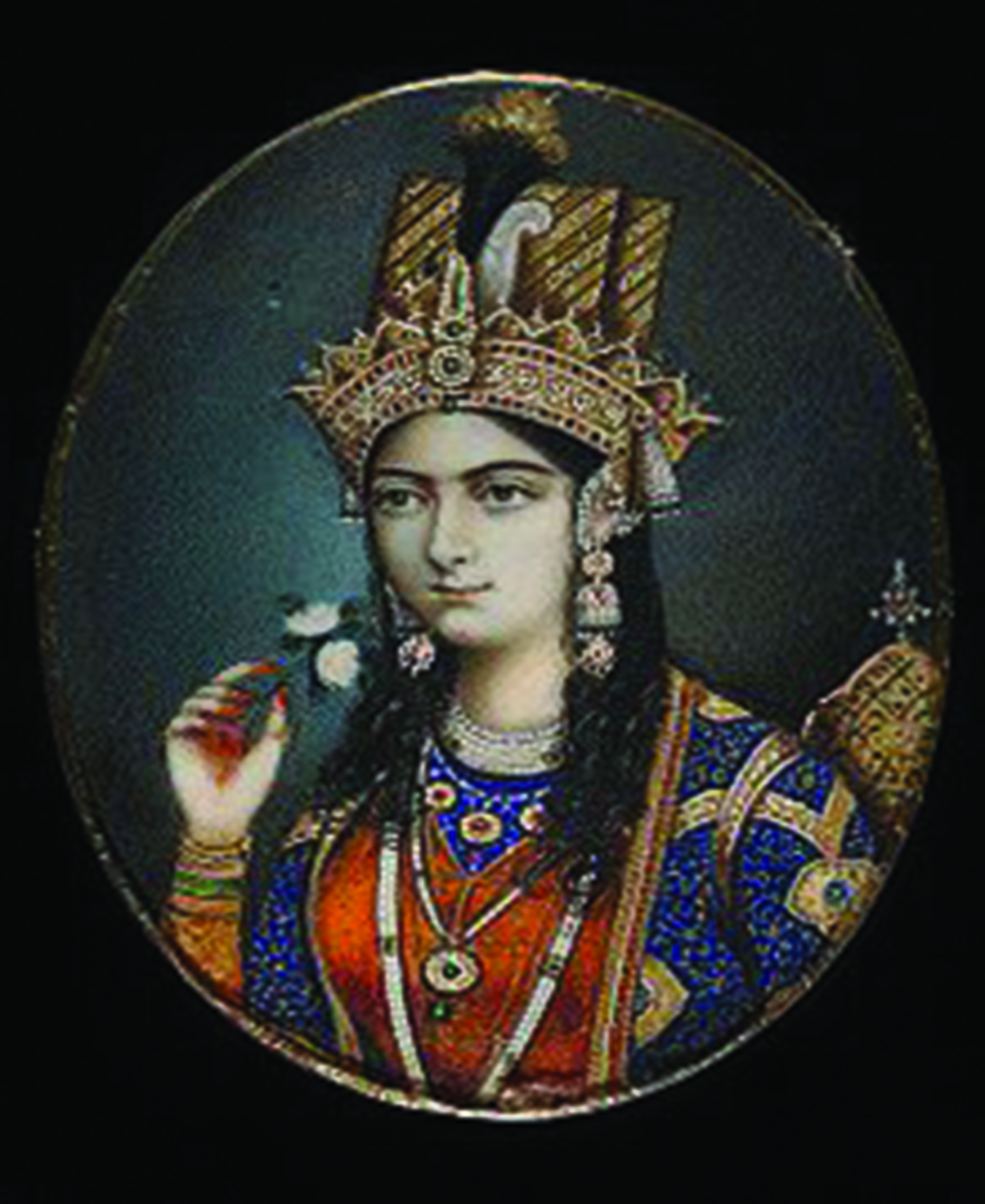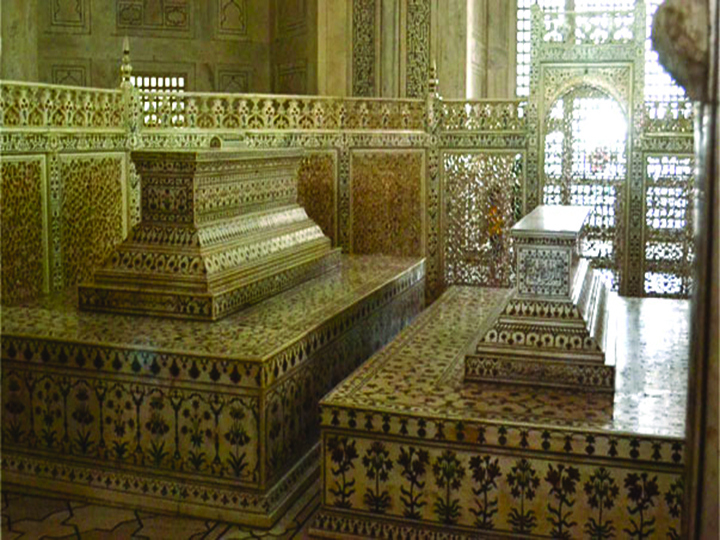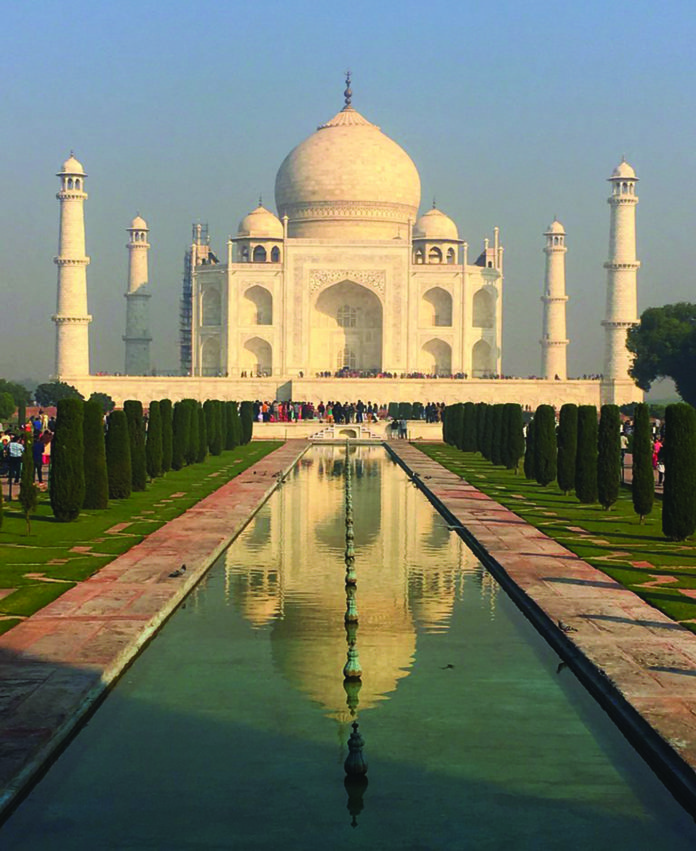Arjumand Bano Begum, later known as Mumtaz Begum, was the daughter of Asaf Khan, brother of Nur Jahan, and Wazir of Emperor Jahangir.
She was Persian by descent and was known to be the beauty of her age. Her family was closely associated with the Mughal rulers as both her father and brother remained Wazirs of the Empire. Moreover, her father’s sister Nur Jahan married Jahangir and was known to be a ruler in her own right although functioning in the name of her husband.
Arjumand Bano married Prince Khurram, the second son of Jahangir in 1612 and bore him 14 children. Unlike Nur Jahan or her own daughter Jahanara, who was the fourth important woman in Shah Jahan’s life, Mumtaz Mahal remained in the shadows and her reign as queen consort lasted only for three years. She surrendered her mind and soul to her husband who loved her as never a wife was loved. She sustained Shah Jahan in his sufferings, wanderings and exile and also in his flight from place to place in the inhospitable regions of Telingana, Bengal, Rajasthan and the Deccan when he rebelled against his father.
She was betrothed to Prince Khurram earlier but it took three years for the marriage to be solemnised. Emperor Jahangir blessed their first born daughter and gave to this first auspicious child the name of Hur al-Nisa Begum and also adopted her as his own daughter. On his accession to the throne, Shah Jahan awarded two lakh ashrafis and six lakhs rupees to Mumtaz Mahal and ten lakhs of rupees was fixed as the annual allowance for her.


She was given the title of Malika-i-Jahan but was popularly known as Mumtaz Mahal, a title bestowed on her by Shah Jahan on his accession. She played a quiet role in the affairs of the state and was entrusted with the custody of the Royal Seal. The state documents were sent into the harem and it was her privilege to affix the Royal Seal on them. Mumtaz Mahal as being the Royal-Consort possessed her hukm as ‘hukm-iuliyai aliya mahdi uliya Mumtaz Mahal Begum’ along with the seal of a round shape.
Shah Jahan usually consulted her on private as well as state affairs. She also advised the king in some matters in which she was personally interested such as when Shah Jahan wanted to punish Saif Khan, Governor of Gujrat, whose loyalty he suspected, Mumtaz Mahal interceded on his behalf because he was the husband of her sister and got him spared of the rigours of imprisonment.
Mumtaz Mahal was aptly educated and was highly cultured. She was adept in the Persian language, and her perception towards poetry was of excellence and was also a poetess herself. In Shah Jahan’s Court the Persian aristocracy, through the Queen Mumtaz Mahal, was imbued with Persian ideas of grace and luxury carried almost to the point of over-refinement and exaggeration
Jahan Ara, her daughter, was also a good poetess and a prose writer. She wrote ‘Monis-ul- Arwah’, which is one of her worthiest piece of scholarly work. Mumtaz Mahal was a generous lady and her benevolence provided dowry for many needy girls. On her recommendation many persons received help and scholarships. She used to place before the king cases of the helpless and the destitute for royal favour.
In their nineteen years of married life Mumtaz Mahal gave birth to fourteen children bringing forth almost one issue almost every year. But her repeated pregnancies ruined her health and she died while giving birth to the fourteenth child, who however survived her. Shah Jahan was badly shocked at her demise and it was widely reported that his hair turned grey very shortly after her death.

She was temporarily buried in a pavilion in the garden of Zainabad at Burhanpur but was later reburied in Agra and Shah Jahan built over her grave the most magnificent mausoleum in her memory which the world has known as Taj Mahal. The Taj Mahal is one of the wonders of the world and is a noble monument of conjugal love and fidelity. It was known that 40 lakhs of rupees were expended by the skillful and experienced architects in completing this magnificent mausoleum.
After her death the rank of honour was transferred to her eldest daughter, Jahan Ara Begum, on whom Shah Jahan bestowed the title of ‘Sahibatuz Zamani’. She also enjoyed the title of ‘Badshah Begum’ but was commonly known as ‘Begum Sahiba’. She was partial to her brother Dara Shikoh and played some role in the war of succession fought between the sons of Shah Jahan and Mumtaz Mahal. The imperial couple had four sons who fought for the throne and their third son Aurangzeb won the war of succession, killed his three contesting brothers and incarcerated Shah Jahan for seven years in a palace from he could see Taj Mahal. He died in captivity.
This article originally appeared in The Weekender and has been reproduced with permission





























